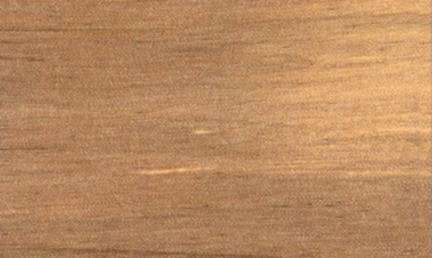
Campnosperma (Campnosperma brevipetiolata)
Family: Anacardiaceae
Common names: Arrida, Campnosperma, Charm, Dohng, Elak, Ka, Karimari, Kelel a charm, Kelela charm, Kelinting, Keralm, Kiu, Melumut, Napan, Ramala, Ramlluw, Ramluw, Ramulo, Serantang, Terentang, Thong, Toemboes, Tohn, Tong
Distributed in: Papua New Guinea, Solomon Islands (Oceania and S.E. Asia)
Distribution overview: Papua New Guinea, the Solomon Islands, and Micronesia.
Common uses: Bedroom suites, Blockboard, Boxes and crates, Building materials, Cabinetmaking, Casks, Chairs, Chests, Concealed parts (Furniture), Core Stock, Cutting surfaces, Decorative plywood, Decorative veneer, Desks, Dining-room furniture, Dowell pins, Dowells, Drawer sides, Excelsior, Figured veneer, Fine furniture, Floor lamps, Furniture , Furniture components, Furniture squares or stock, Hatracks, Interior construction, Interior trim, Joinery, Kitchen cabinets, Living-room suites, Matchboxes, Matches, Millwork, Moldings, Office furniture, Packing cases, Plain veneer, Plywood, Pulpwood, Turnery, Veneer
Environment profile: Status has not been officially assessed
Tree size: Trunk diameter is 150-200 cm
Colors: the heart isRed, Yellowand the sapwoodSomewhat differentiated from the heartwood, Yellow.The grain isStraight, the textureMediumand the lusterMedium
Natural durability: Slightly resistant to decay causing organisms, Vulnerable to attack by pin-hole borers, sap-stain fungi and termites
Odor: No specific smell or taste
Kiln Schedules:
The above kiln schedule has been recommended for 4/4 to 6/4
Drying Defects: Moderate end spitting, Splitting
Ease of Drying: Moderately Difficult to Difficult
Comments: Abnormal Wood Tissue - The material is reported to frequently contain reaction wood which can interfere with some machining operations.Reaction wood may be present
Cutting Resistance: Fairly Difficult to Very Difficult to saw
Gluing: Glues well
Planing: Very Good to Excellent
Resistance to Impregnation: Sapwood is treatable
Response to hand tools: Easy to Work
Sanding: Difficult to sand (expect < 50 out of 100 good to excellent results)
Woolly nature makes sanding difficult. Surface has tendency to remain fiberous.
Turning: Very Good to Excellent Results
Polishing: Very Good to Excellent;
- Numerical data Metric
- Numerical data English
- Strength properties
- References
 |
 |
 |
 |
| Item |
Green |
Dry |
Metric |
| Specific Gravity |
0,29 |
0,33 |
|
| Density |
|
400 |
kg/m3 |
| Bending Strength |
339 |
590 |
kg/cm2 |
| Crushing Strength |
8 |
13 |
kg/cm2 |
| Hardness |
|
141 |
kg |
| Impact Strength |
|
|
cm |
| Shearing Strength |
|
78 |
kg/cm2 |
| Stiffness |
69 |
96 |
1000 kg/cm2 |
| Tangential Shrinkage |
|
|
% |
| Radial Shrinkage |
|
|
% |
| Weight |
|
|
kg/m3 |
| Maximum Load |
|
|
cm-kg/cm3 |
| Toughness |
|
72 |
cm-kg |
| Static Bending |
231 |
409 |
kg/cm2 |
|
 |  |  |  | | Item | Green | Dry | English | | Bending Strength | 4831 | 8399 | psi | | Crushing Strength | 123 | 191. | psi | | Density | | 25 | lbs/ft3 | | Hardness | | 312 | lbs | | Maximum Crushing Strength | 2646 | 4802 | psi | | Shearing Strength | | 1117 | psi | | Static Bending | 3293 | 5831 | psi | | Stiffness | 990 | 1372 | 1000 psi | | Toughness | | 63 | inch-lbs | | Specific Gravity | 0.29 | 0.33 | | | Weight | 25 | 20. | lbs/ft3 | |
Weight = light
Surfaces may dent or scratch easily
Surfaces may dent easily
Compression strength (parallel to grain) = low
Bending strength (MOR) = medium
Species has medium bending strength in the air-dry condition (about 12 percent moisture content). It is closer in strength to Mahogany than either Teak or White oak, which have higher bending strength. Maximum crushing strength, or compression strength parallel to grain, is low. It is weaker than Mahogany or Teak. It is not hard and can be dented and marred easily. Weight is low. The density is average, or medium.
Bolza, E., Kloot, N. H. 1966. The Mechanical Properties of 81 New Guinea Timbers. Technological Paper No. 41. Division of Forest Products, Commonwealth Scientific and Industrial Research Organization (CSIRO, Melbourne, Australia.Eddowes, P.J. 1977. Commercial Timbers of Papua New Guinea - Their Properties and Uses. Forest Products Research Center, Office of Forests, Department of Primary Industry, Papua New Guinea.Keating, W.G., Bolza, E.,1982,Characteristics properties and uses of timbers. South East Asia, Northern,Australia and the Pacific,C.S.I.R.O. Div. Chemical Technology,Inkata Press,1
|








